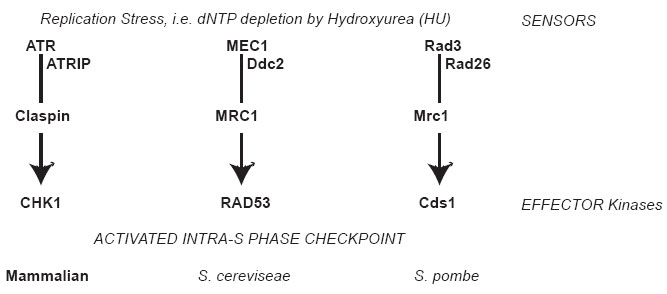Intra-S phase checkpoint signaling
Keywords
Flag Inappropriate
Delete Content

Intra-S phase checkpoint signaling
When replication stress is encountered, as during HU exposure, signals are transmitted through a kinase cascade. The paths compared between species are shown, and the given proteins in the pathway have functional similarity between species. At the top, signals are transmitted through the apical kinase: ATR in vertebrates; Mec1 in Saccharomyces cerevisiae (budding yeast); Rad3 in Schizosaccharomyces pombe (fission yeast). These kinases form a complex with adaptor proteins such as Atrip (or Ddc2, or Rad26) and transmit signals through transducers Claspin (or Mrc1 in yeast). For the purpose of this review, the ultimate target is the effector kinase: CHK1 in vertebrates, Rad53 in budding yeast, and Cds1 in fission yeast.
This image is linked to the following Scitable pages:
At a stalled DNA replication fork, how is replication restarted after DNA damage has been resolved?
What happens at the DNA replication fork? How does a replication fork stall?






















Comments
CloseComments
Please Post Your Comment